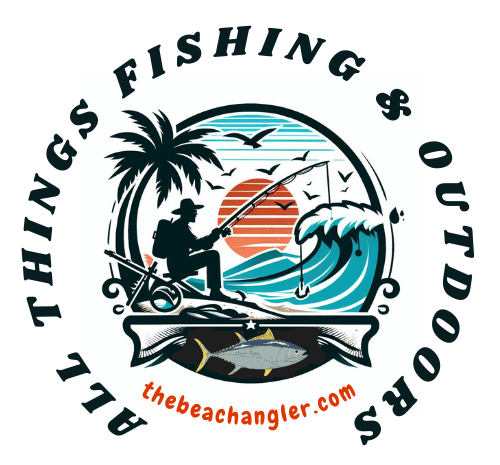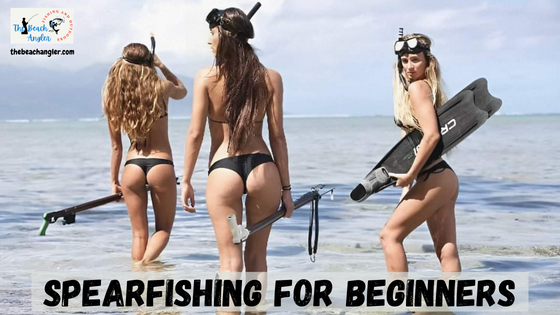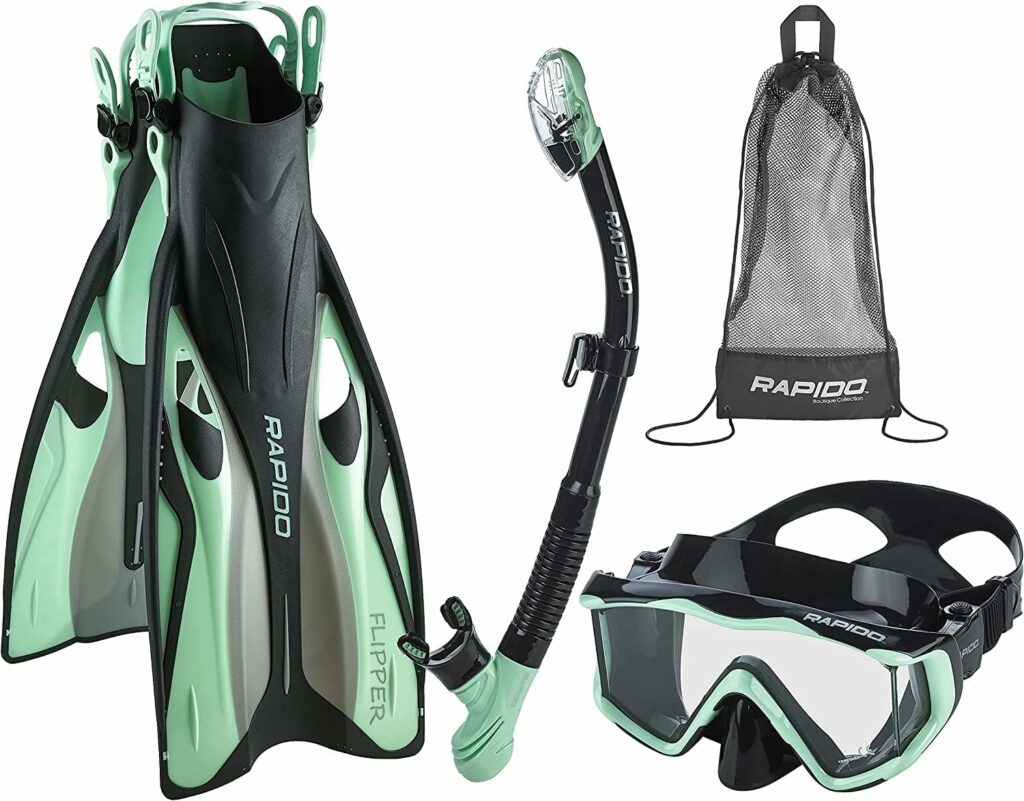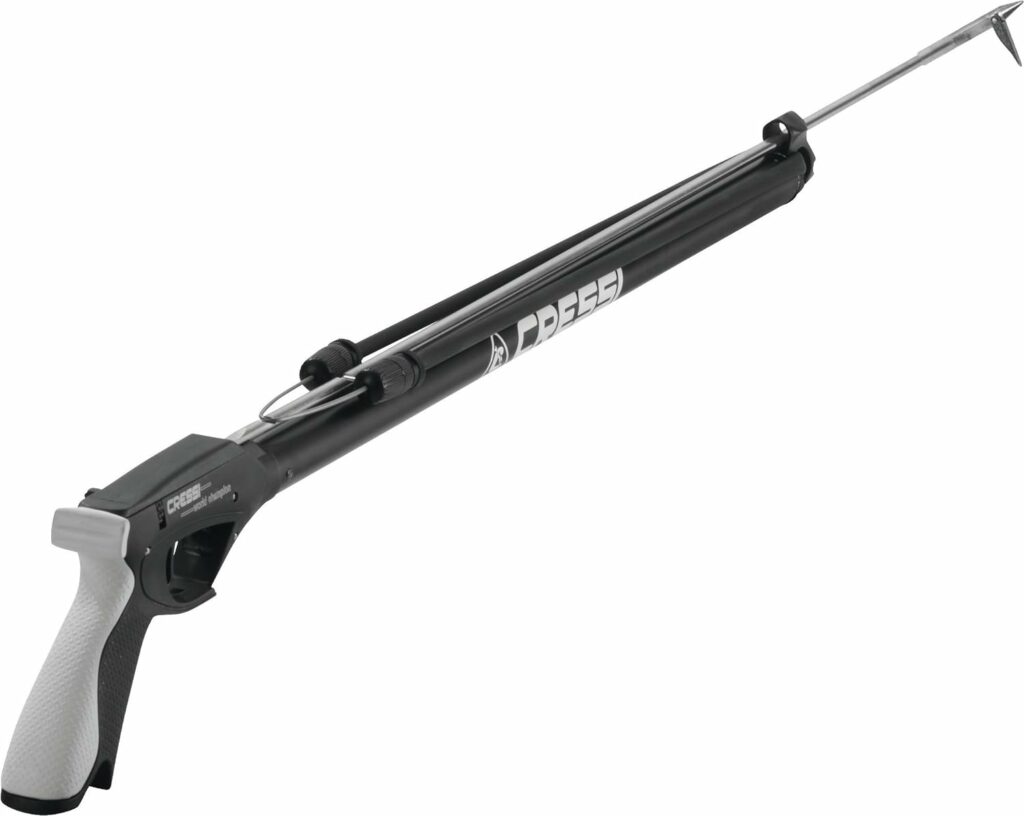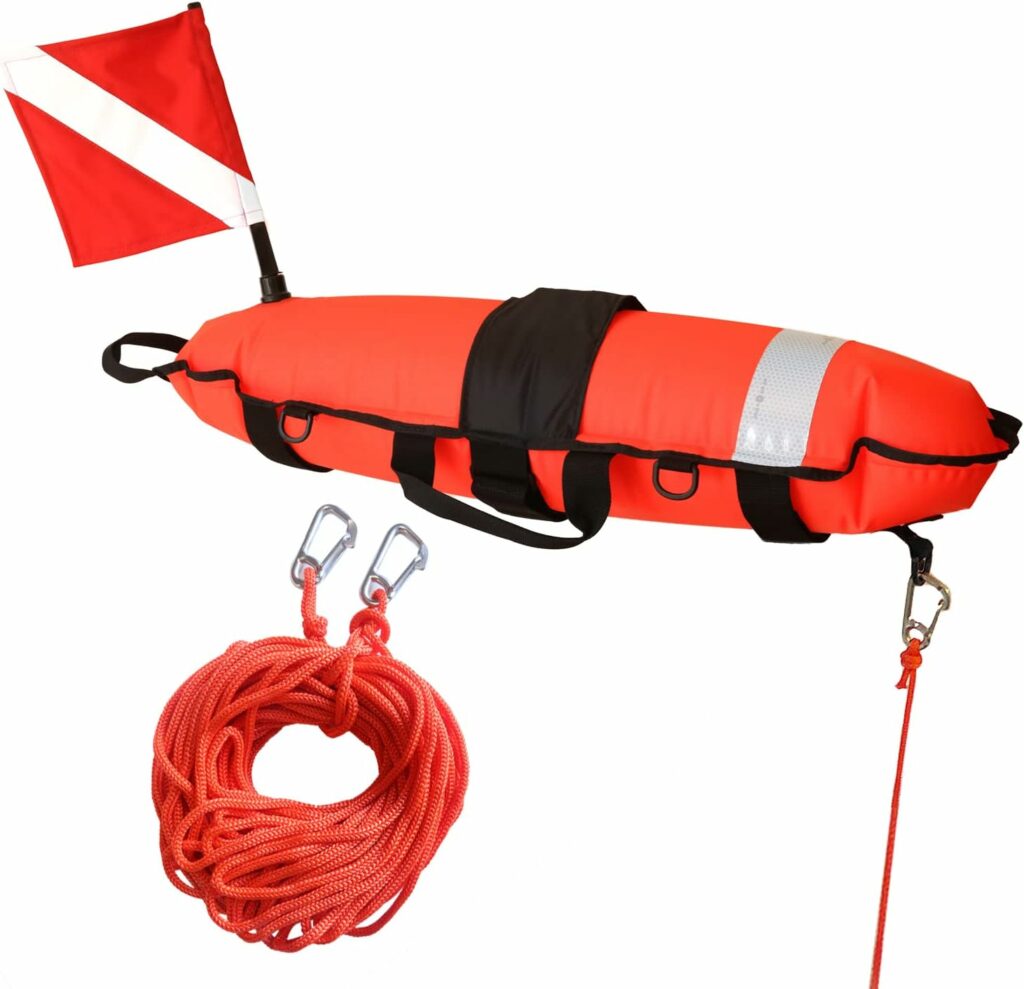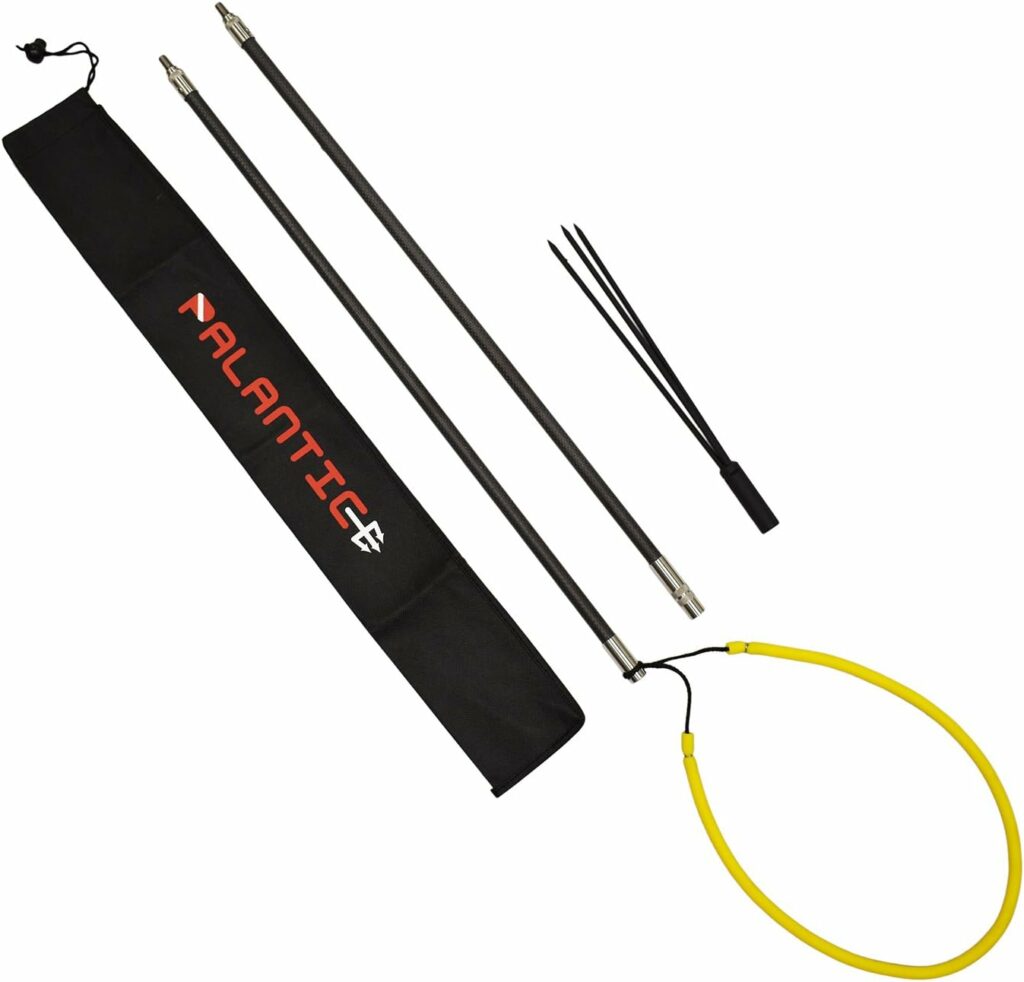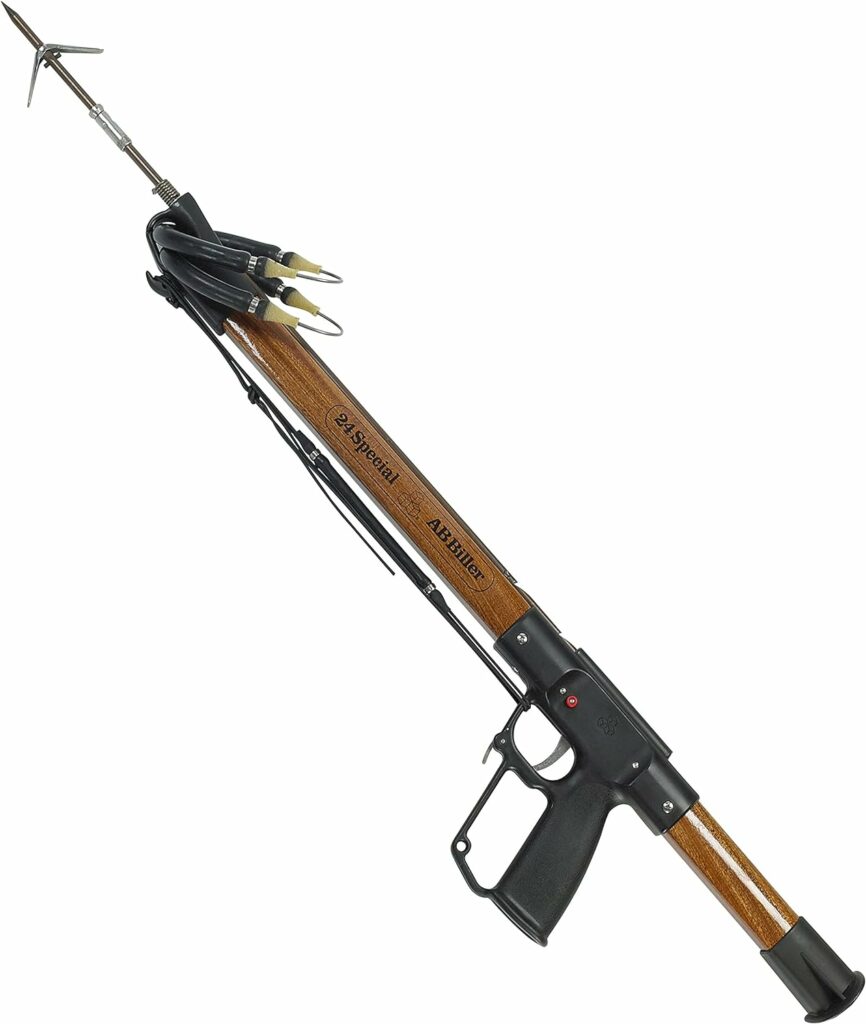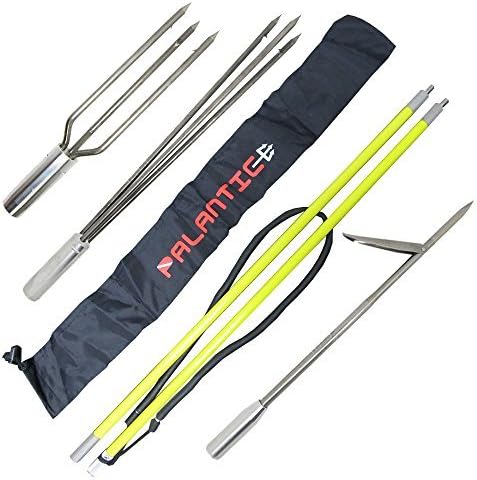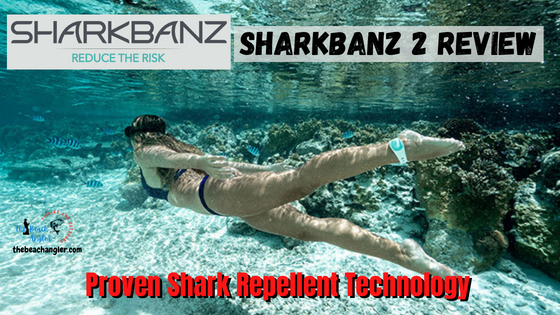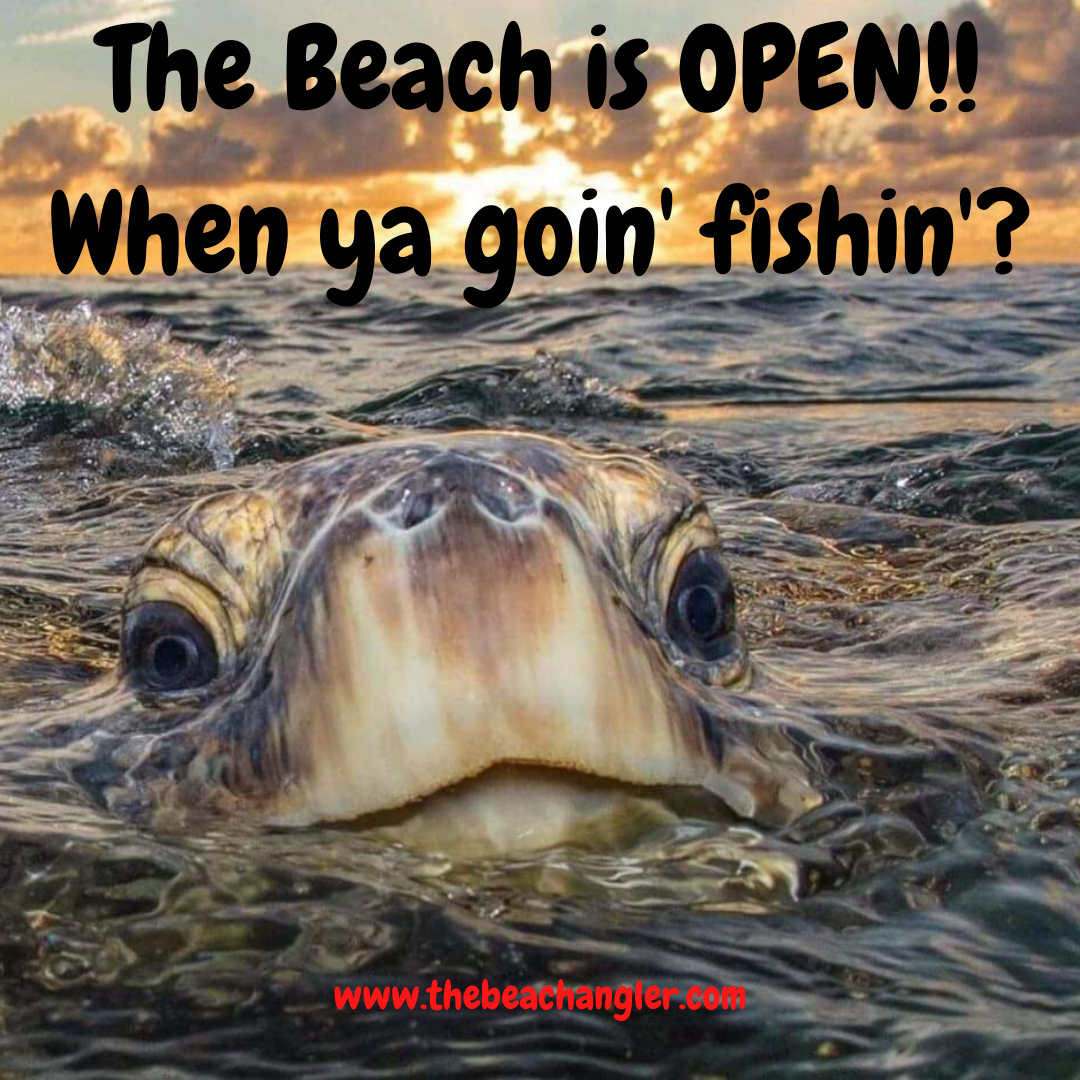If you are looking for a new exciting and challenging way to catch fish, spearfishing may be just the ticket for you. In this article, we will cover spearfishing for beginners including everything you need to know to get started right.
Being an avid fisherman and hunter, spearfishing always intrigued me. So, many years ago, I got my SCUBA certification for the primary purpose of spearfishing. If you’re not to familiar with spearfishing, or just getting started follow along and we’ll “dive in” and take a look together.
Quick Look:
Spearfishing is an ancient fishing method that has been practiced for thousands of years and it has become increasingly popular in recent years. However, before you “dive in” on your spearfishing journey, it’s important to understand the basics of the sport, including gear, techniques, and safety precautions. Spearfishing has the added benefit of keeping you physically active as you will be “swimming with the fishes”, so to speak. 😉 All you need to get started are a mask, fins, snorkel, a speargun or pole spear and a fishing buddy and you are set.
It may sound strenuous, and it will be the first few times, but eventually as you get more comfortable and focused on the fish, you will begin to enjoy the water and quiet solitude of the sport. It’s just you, the fish and the water.
You can spearfish for everything from perch to tuna and marlin. In fact, the Current World Record is a 581 pound (263.9 kg) Black Marlin caught May 29, 1999, at lighthouse Reef, Mapelane, South Africa by spearfisherman Brad Neilson. Imagine that on the end of your speargun.
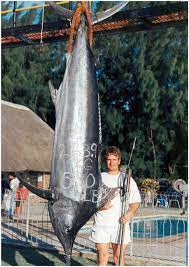
Basics of Spearfishing for Beginners
Spearfishing is an underwater hunting technique that involves using a specialized tool, a speargun or a pole spear, to capture fish. Unlike traditional fishing, where you use a rod and bait to attract and catch fish, spearfishing requires the hunter to get closer to the fish, usually within range of the spear.
There are two main types of spearfishing: free diving and scuba diving. Free diving is the most common form and involves diving without any breathing apparatus, relying only on your own lung capacity to stay underwater. Scuba diving, on the other hand, involves using a tank of compressed air to breathe underwater and stay submerged for longer periods.
Spearfishing can be practiced in different environments, including the ocean, rivers, and lakes, and can be a great way to connect with nature while providing a source of food. You will be taking the “hunt” to the fish much like bowfishing. With spearfishing however, you will be in the water with them actively pursing your quarry. You won’t be waiting on the fish to bite or start feeding, you go after them whether they are hungry or not.
Initially, spearfishing can be tough. You will be having to swim, hold your breath, load and fire a speargun and then bring your catch to the surface. You are in the fish’s environment and they know it better and are much better swimmers than you. Using a speargun takes practice, it is not difficult to use, but it takes some time to learn proper aiming and firing so you can hit your target consistently.
There are organizations that offer spearfishing courses and while it is not necessary to be “certified” to spearfish, most spearfishing courses will include dive certification in either free diving or SCUBA. They are not very expensive and I highly recommend taking a course before you get started spearfishing.
Spearfishing for Beginners Checklist:
- Get in Shape – you need to be able to swim for an extended period.
- Search for Spearfishing Organizations. – Spearfishing clubs, online forums or social media groups. Great places for tips and strategies and fishing locations.
- Take a Spearfishing Course. Check online to find one near you. Get the basics and some practice under your belt before you dive in.
- Find a Mentor or Spearfishing Buddy. – Preferably someone who already has experience spearfishing. NEVER SPEARFISH ALONE.
- Gather the Right Gear. – You need some basic gear like speargun, mask, fins, and snorkel. Make sure it fits you, your budget and your local rules and regulations.
- Practice in Shallow Waters. – Get familiar with you gear and its use in a safe shallow water environment before you start actual fishing.
- Plan Your First Trip. – Do your research, talk to people in the forums or social media groups, call the local bait shops and marinas to pick your first spearfishing destination and begin planning your adventure.
- Know Before You Go. – Check with the local authorities. Get the rules, regulations, bag limits, license requirements and any restrictions.
Spearfishing for Beginners Recommended Gear
Spearfishing Equipment and Gear
As a beginner, it is essential to have the right gear and equipment for spearfishing. It is not an overly expensive sport to take up. You can get started for around $300. Here is the basic gear you will need:
Wetsuit – Optional
A wetsuit is an optional piece of equipment that will keep you warm in the water and protect your skin from scratches and cuts. It also provides buoyancy, making it easier to dive and swim underwater. Now, if you are spearfishing in colder climates and water, a wetsuit will become an essential gear item. A hood and dive boots will also be a good addition in cold water.
Mask Fins and Snorkel
A mask and snorkel are necessary for seeing and breathing underwater. A good quality mask should fit comfortably and provide a clear view of your surroundings. A snorkel will allow you to breathe while keeping your head in the water and eyes on the fish and your surroundings. Fins will help you swim underwater faster, much more efficiently and with less effort.
Speargun Pole Spear or Hawaiian Sling
The speargun for fishing is the most important piece of equipment for spearfishing. They come in different sizes and styles and manufacturers, depending on the type of fish you want to catch and your level of experience. Pole spears or Hawaiian slings are also options for beginners who want simpler and less expensive tools. And they may be the required method in some areas.
When choosing a speargun, beginners should consider something smaller that will be easier to load and handle underwater. Spearguns are measured from the tip of the muzzle to the handle in centimeters. Most common sizes are 90cm, 100cm, 110cm, 120cm, and 130cm.
In addition to speargun length you will need to decide on the size and number of bands. The bands are what provide the energy for shooting the spear. More and thicker bands will shoot farther, but are harder to load. Single band guns are much easier to load but have a shorter effective range.
For a beginner, the most common speargun is a single ( or double) band gun between 90 to 110cm in length. This makes a good starter setup while you get used to this new sport and how to load, aim and fire a speargun underwater.
Of Course, you also need to consider where you will be doing most of your spearfishing, and what fish you will be targeting as well. For larger fish you will need a larger speargun. If you are fishing cramped spaces like caves and rocks, a shorter gun will be the best choice.

Additional Recommended Spearfishing Gear
Weight belts – Mainly for spearfishing with SCUBA gear, a weight belt will help you get the depth you need when SCUBA diving.
Dive Gloves – In cold water your hands will go numb without gloves and it will be hard to operate your speargun. Dive gloves will also protect your hands from sharp objects like barnacles, rocks and coral.
Dive Knife – Probably one of the most important pieces of gear outside of your speargun. For protection if you need to defend yourself from other predators, and in case you become tangled in discarded fishing line, seaweed or your own line. Always carry a knife when spearfishing or diving in general.
Speargun float – The float keeps you from losing your speargun. Once you shoot a fish, you may have to drop your gun and head to the surface for air. The float will allow you to find and retrieve your gun and catch once you have caught your breath.
Dive Flag – When diving or spearfishing it is an international requirement that you display the “diver down” flag to alert other boaters to your presence and to keep their distance. You don’t want a fishing vessel to come over you trolling a bunch of lines and hooks.
NOTE ON: Spearfishing with SCUBA Gear
SCUBA gear is not necessary for spearfishing but it allows you to fish deeper waters and stay underwater much longer than free diving. However, spearfishing with SCUBA gear is not legal in some parts of the world. It is legal in the US where I live and is the main reason I took SCUBA lessons. So, why is scuba spearfishing banned in some countries?
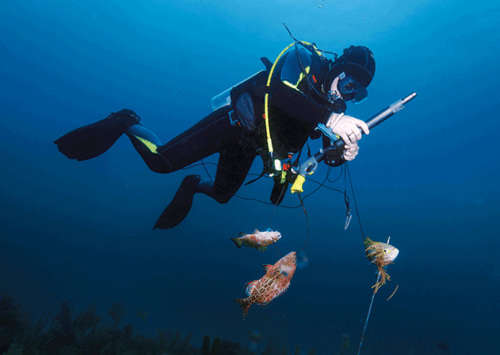
The two main reasons for banning SCUBA spearfishing are : 1) Some studies suggest fish become accustomed to SCUBA divers and that they lose some of their natural fear for them. This makes them easy targets for spearfishermen using SCUBA gear, and the fear is that over fishing could result.
And, 2.) Some of these countries rely heavily on the tourist trade and offer diving excursions where tourists can see and experience the various fish and aquatic life. The concern is that SCUBA divers spearfishing will cause the fish to avoid divers all together which would cut into tourist revenues.
Spearfishing for Beginners – Methods and Tactics
To become a successful spearfisher, you need to master the different skills, techniques and methods of spearfishing. The following are some of the most important.
Freediving and Breath-Holding
Freediving is the art of diving underwater without any underwater breathing apparatus. To become good at freediving, you need to learn proper breathing techniques and practice holding your breath for longer periods than you may be used too. This will allow you to dive deeper and stay underwater longer, which will increase your chances of catching fish.
A good target for holding your breath is 90 seconds and you can practice at any swimming pools or body of water. Most free divers spearfish at depths between 5 and 25 meters.
You need to be able to hold your breath long enough to get down there, stalk your prey, make the shot, and get your catch back to the surface before you run out of air.
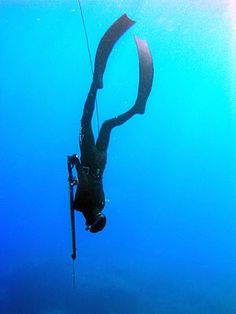
Stalking and Ambushing
Stalking involves slowly and quietly approaching the fish while keeping low and hidden from their sight remember, you are actually hunting as much if not more than fishing. Ambushing, on the other hand, involves waiting in one spot for the fish to come closer before taking your shot. Both techniques require patience, practice, and a good understanding of fish behavior. And, of course, a good bit of luck.
Shooting and Retrieving
When you have spotted your target fish, it’s time to take the shot. Aim for the vital organs, such as the head or the heart, to ensure a humane and effective kill.
You always want to aim below the fish because the refraction of light makes the fish appear closer to the surface than they are. The distance that you aim depends on how far away you are from the fish, and how deep the fish is in the water aim about 6 inches (15 centimeters) low for every 1 foot of depth.
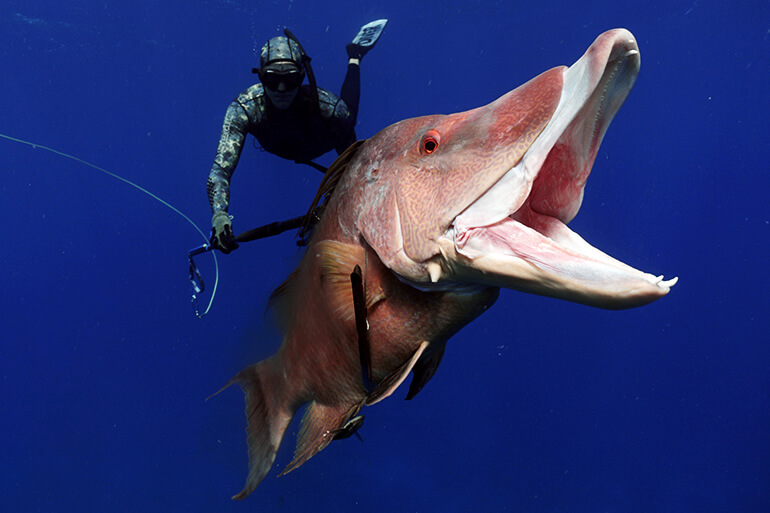
Once the fish is hit, retrieve it as quickly and safely as possible, be careful not to lose it or harm yourself and then get it to the surface and on ice as soon as possible.
NOTE: Spearguns can be deadly, never load or fire a speargun out of water. A spear that may travel 25 meters under water can travel over 200 meters out of the water.
Spearfishing Safety Concerns and Precautions
Spearfishing can be a dangerous sport, so it’s crucial to take the necessary safety precautions. You will be dealing with wind, waves, water, currents and sometimes other large predators (see sharks). Here are some safety tips to keep in mind:
Know Your Limits
Understand your physical limits and don’t push yourself too hard. Never dive deeper or stay underwater longer than your abilities allow, and always listen to your body’s signals. If you get tired, take a break. Remember, it’s not a competition.
Buddy System and Communication
Spearfishing should always be practiced with a buddy, so you can keep an eye on each other and help in case of an emergency. Make sure to have clear set of signals to use to communicate with each other underwater, and always stick together. Never go spearfishing, or diving and snorkeling for that matter, alone.
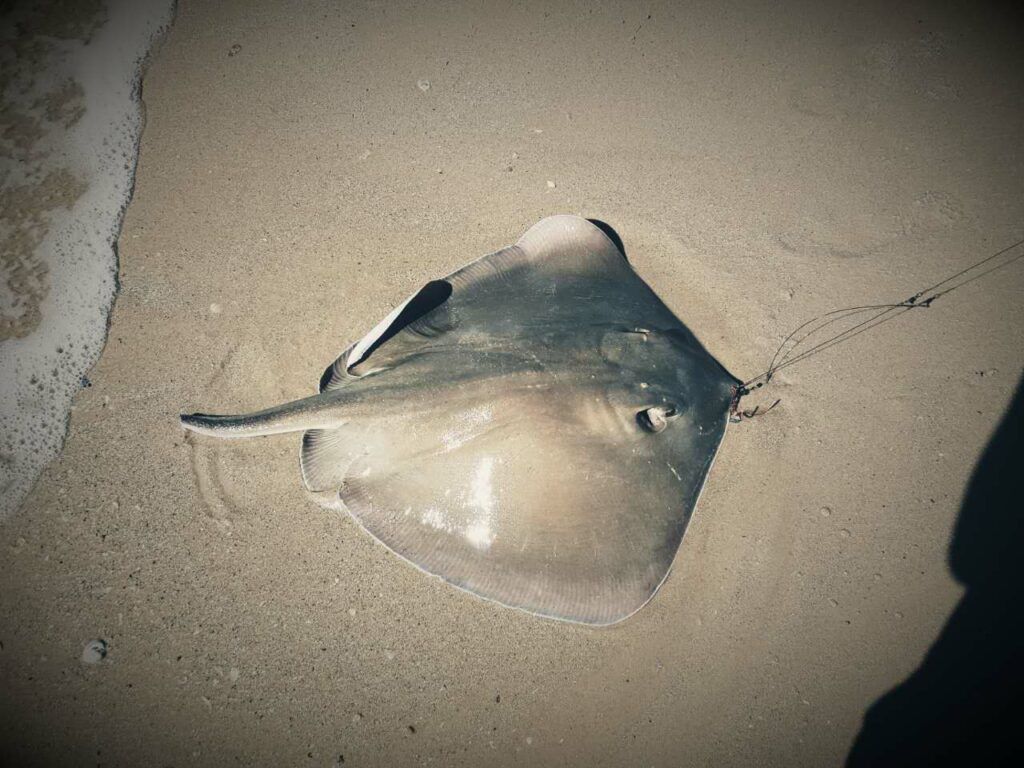
Avoiding Dangerous Marine Life
Be aware of dangerous marine life, such as sharks, stingrays, barracuda, sea urchins, jellyfish and know how to react in case of an unexpected encounter. Also, avoid areas with strong currents or rough waves, and always check the weather forecast before diving.
What are the dangers of spearfishing?
With Spearfishing you may encounter a variety of dangers including Sharks, heavy seas, strong currents, Jelly Fish, and risk of drowning from fatigue or getting fouled in your line while fighting a speared fish. Please read your speargun instruction manual carefully before going spearfishing, be informed, practice safety first, always dive within your body and skill level limits, and never ever dive alone.
Spearfishing Safety Precautions
- Always spearfish with a buddy. If you run out of air, get tangled or even attacked, you’ll need someone to help you out.
- Never point your spear gun in the direction of another person be sure of your target and what is beyond.
- Don’t push yourself beyond your physical limits and abilities.
- Avoid areas with high boat traffic.
- If spearfishing in areas where sharks are known to prowl, consider a shark deterrent like a SharkBanz bracelet.
What about Spearfishing with Sharks?
If you venture into the ocean on a spearfishing trip, keep in mind that you are no longer the top of the food chain. There are bigger and more dangerous predators lurking not the least of which is sharks. Sharks hunt fish too, and when you spear a fish, immediately there will be blood in the water and a struggling fish at the end of your line putting off a lot of vibrations in the water.
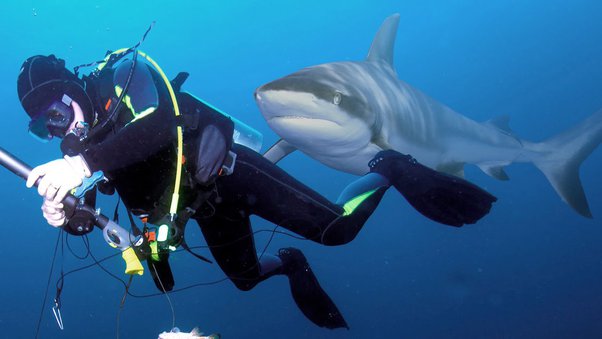
Both of these will attract sharks from long distances. Keep your eyes open, your head on a swivel, and get your catch to the surface and in the boat ASAP.
If a shark should come along and grab your catch, let him have it. Don’t struggle with it, you and your dive buddy swim back to the boat keeping your eyes on the shark at all times.
Once sharks appear on the scene, it is best to get everyone out of the water and move to another location for safety.
Spearfishing – Finding a Place to Fish
Finding a good spot to spearfish will take some research, planning. You need to consider the local regulations for areas open to spearfishing and fish that are legal to take with spearfishing gear.
Research and Planning
Do some research online, look for local fishing forums or spearfishing groups on social media. Ask local fishermen for advice on where to find the best fishing spots check with the local bait and tackle shops as well as marinas. You’re looking for areas with plenty of fish and suitable conditions for spearfishing, such as clear water and a manageable current.
Legal Regulations
Make sure to check the local regulations before spearfishing, as some areas may have restrictions or require permits. Some areas, like the US, allow the use of SCUBA gear while others, like most of the Caribbean nations, do not.
Always respect the limits on the size and quantity of fish you can catch, and only keep what you need or can use. Some areas, like the Bahamas, limit spearfishing to pole spears or Hawaiian slings, and prohibit the use of spearguns.
Some US states allow spearfishing in lakes and rivers, but nearly all of them restrict spearfishing to rough fish such as carp, gar, bullheads, and suckers. However, there are a few US states that do allow the taking of certain game fish such as sunfish, crappies, striped bass, catfish and walleye. Once again, check with the local authorities to make sure you get the correct information.
Spearfishing Charters
In many areas, there are guides that specialize in spearfishing trips. Some will even supply the gear if you don’t have your own. You can search for spearfishing guides and charters on fishingbooker.com
The advantages of hiring a charter are 1.) the guide will already know the most likely spearfishing spots and the local rules and regulations.
2.) They will provide transportation to the fishing grounds and take care of your catch until you get back to the dock.
And, 3.) You can try spearfishing with a charter first to see if it really is something you want to take up before you purchase a lot of gear.
Spearfishing – Conservation Considerations
Spearfishing can have an impact on the local fish populations, so make sure to choose areas where your impact will be minimal. Avoid fishing in protected areas, and only spear fish that are legal and you intend to keep. Practicing Catch-and-release is not an option when spearfishing.
Ethics and Conservation
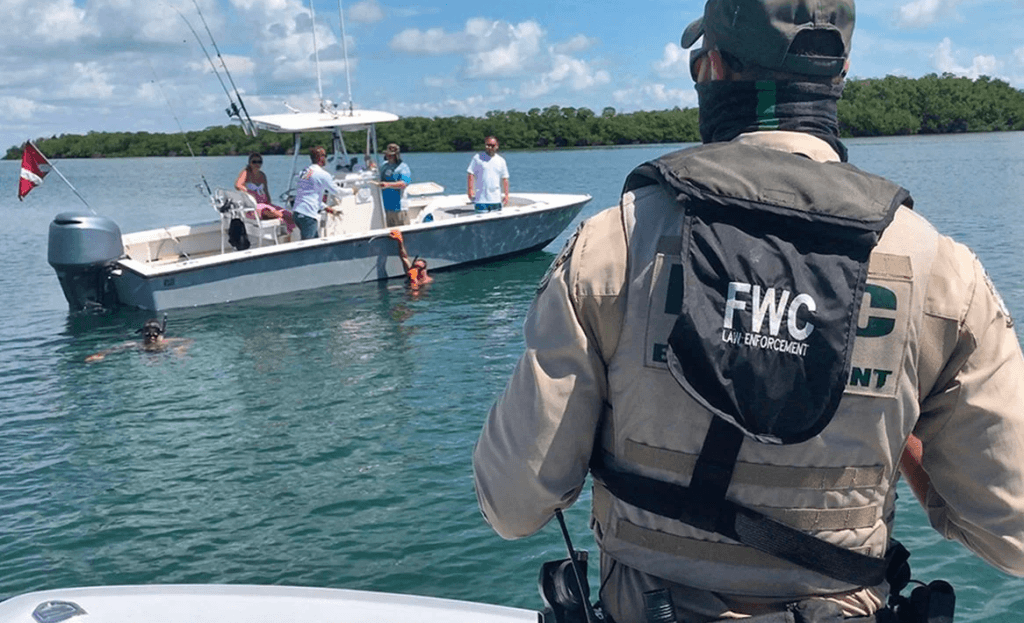
As a responsible spearfisher, it’s essential to follow ethical and conservation practices to preserve the marine environment and ensure the sustainability of fish populations.
Know your target and the bag limits. Only take what you can use. Leave a few for the rest of us. 😉
Responsible Harvesting
Avoid wasting or discarding any edible parts of your catch. If there are parts you don’t want, find someone to donate them too. Respect the size limits and be very sure of your target to avoid any endangered or protected species. It can get very expensive and you may lose your fishing privileges.
Marine Conservation Practices
Contribute to marine conservation efforts by participating in clean-up events, like the Billy Sandifer Big Shell Beach Cleanup, and supporting organizations that protect the ocean and its inhabitants like the Coastal Conservation Association.
FAQ’s About Spearfishing
Spearfishing Frequently Asked Questions:
Is spearfishing legal everywhere?

Yes and no. Spearfishing is generally legal in most coastal areas, but it’s important to check local regulations and permits before going out. Some areas may have restrictions on spearfishing or require specific licenses. Spearfishing with SCUBA gear is not legal in some areas. As always, check with the local authorities and know before you go.
Do I need a license to go spearfishing?
Again, this depends on the area. Some locations require a fishing license or a special spearfishing license, while others do not. It’s always best to check with local authorities to avoid any legal issues.
What is the best time of day to go spearfishing?
The best time of day to go spearfishing depends on the species of fish you’re targeting and the location you’re fishing in. Some fish are more active during the day, while others come out to feed at night. Research the behavior of the fish you want to catch, check with local spearfishermen or forums, and plan your dive accordingly.
How do I clean and prepare the fish I catch while spearfishing?
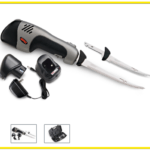
Cleaning and preparing fish for cooking is an important skill for any fisherman, spearfisherman or regular fisherman. Once you’ve caught your fish, remove it from the water as quickly and safely as possible, remember you may not be the only predator present. Once back on land, or at least after everyone is out of the water, clean it thoroughly and remove the guts and other parts you don’t want to eat. Rinse it with clean water and ice it down until ready to cook.
Can I use a spear gun for fishing in freshwater lakes?
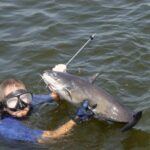
Spear guns are typically used for spearfishing in saltwater environments. Freshwater spearfishing, where permitted, is usually limited to non-game species. Again, it’s important to check the local regulations before going out to avoid any legal issues.
Spearfishing for Beginners Final Thoughts
Spearfishing can be a thrilling and healthy sport for those who love the ocean and enjoy the challenge of “hunting” or catching fish.
As a beginner, it’s important to understand the basics of the sport, including gear, techniques, safety procedures, and conservation considerations.
And, with practice, patience and dedication, you can become a skilled spearfisher and a responsible steward of the marine environment.
By following the tips and guidelines we covered in this article, you will be well on your way to becoming a spearfishing enthusiast and enjoying all this exciting sport has to offer.
Remember to always put safety first, respect the fish and the environment, and enjoy the experience of exploring the underwater world as you “hunt” while fishing.
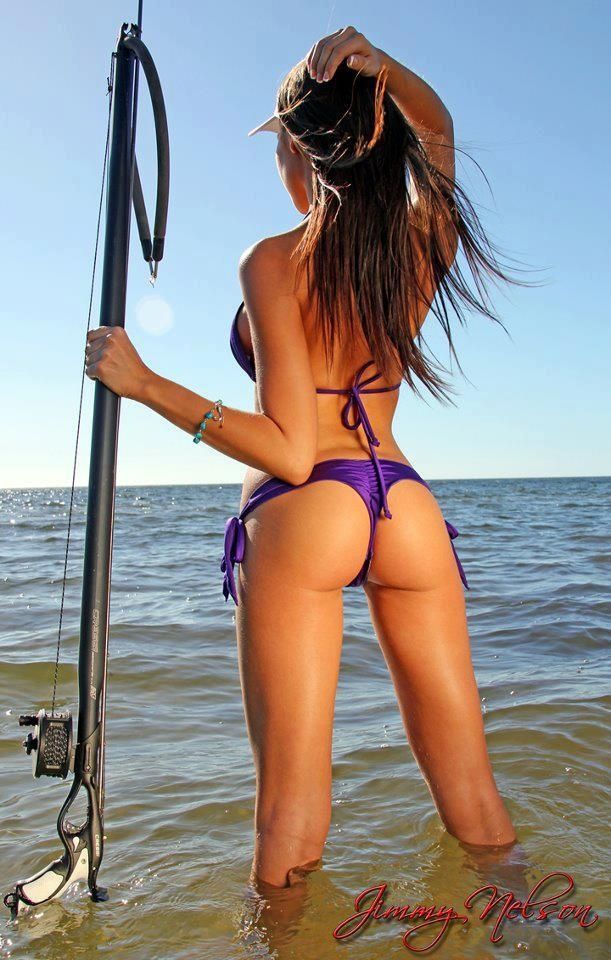
As always, stay safe, enjoy the journey and please try to leave it cleaner than you found it. If you have any comments, questions, ideas or suggestions please leave them in the comment section below and I’ll get back to you asap. You can follow us on Facebook: Rex The Beach Angler, Instagram: thebeachangler7, Twitter: @AnglerBeach, and YouTube: Man Art Creations. Email: rex@thebeachangler.com
P.S. Thanks so much for checking out our blog we really appreciate it. Just so you know, we may receive a commission if you click on some of the links that appear on our site. This helps us keep our content free and up-to-date for everyone. We appreciate your support!”
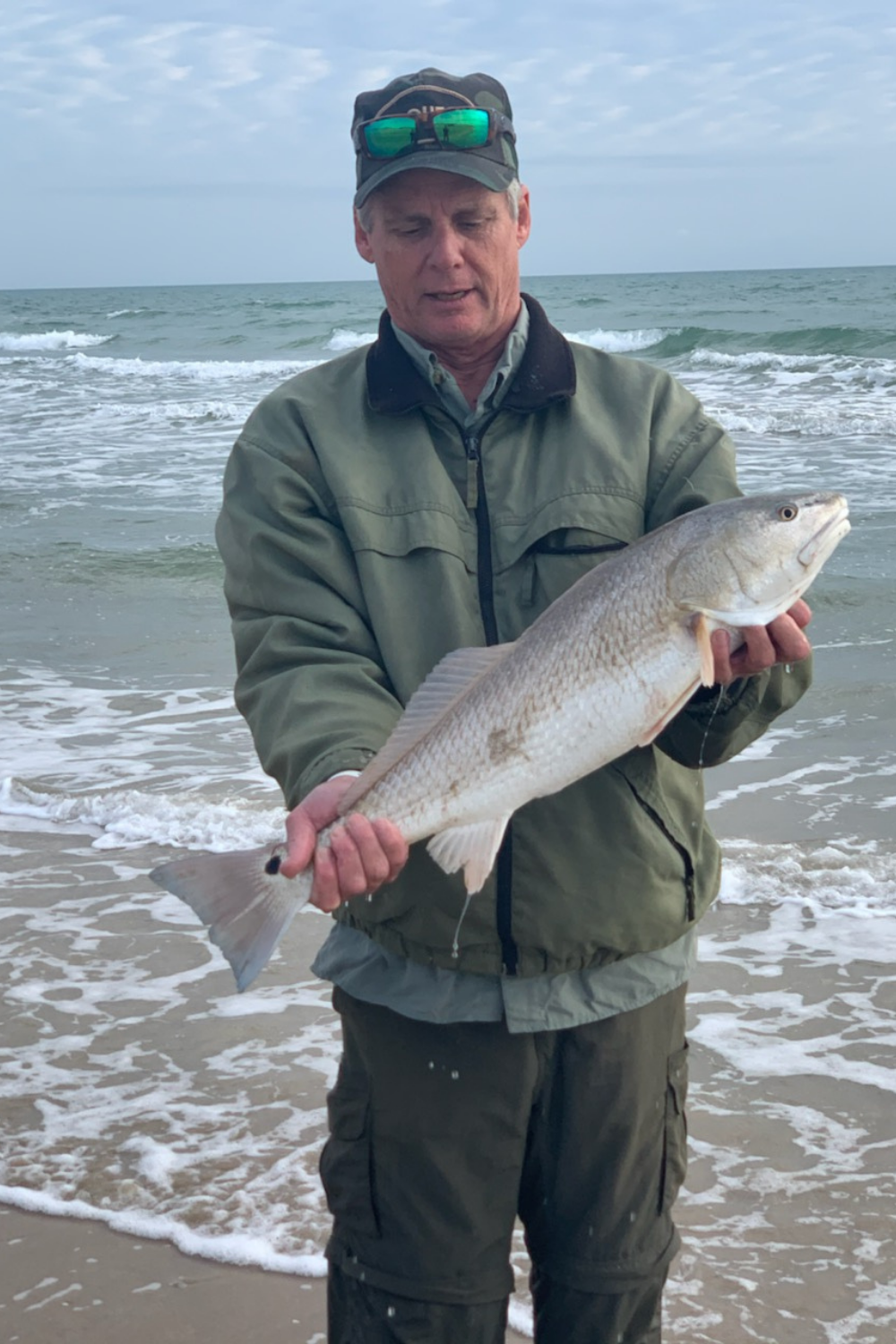
A life long surf fisherman with 50+ years of experience, I am also an avid hunter and outdoorsman. I will be sharing my passion for the outdoors with you so be prepared for hunting, fishing, camping, hiking and more. Along with gear reviews and the latest trends and innovations in the outdoor industry.
